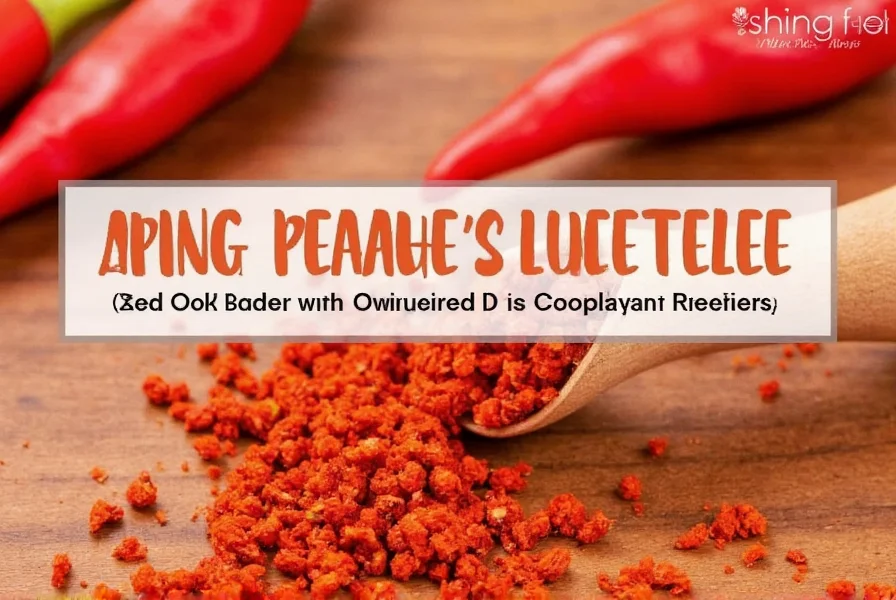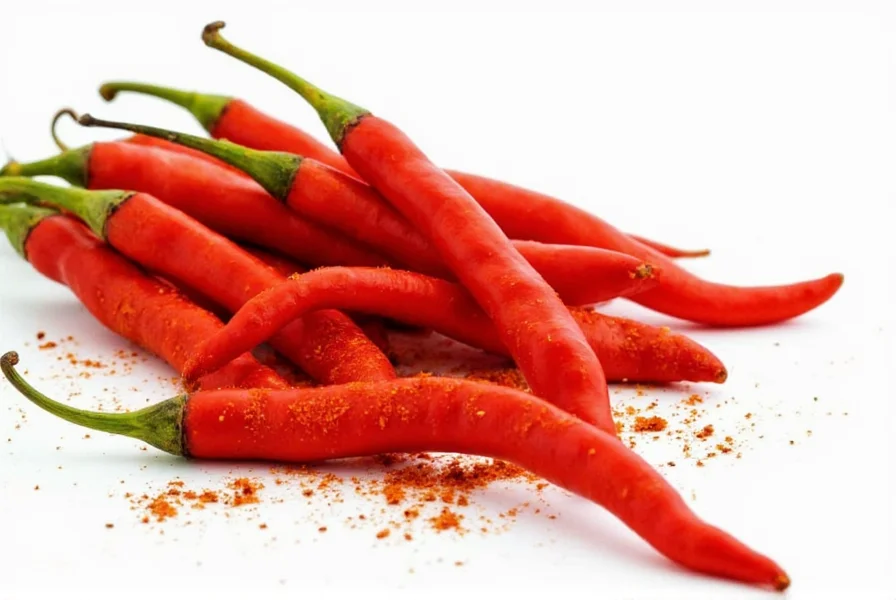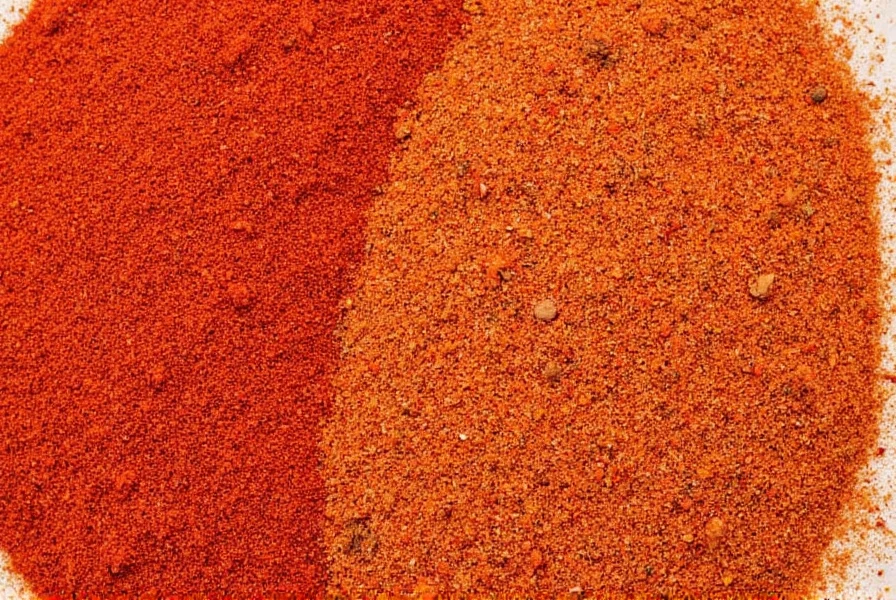If you need a cayenne pepper replacement, the best substitutes are red pepper flakes (use 1:1 ratio), paprika (1.5x amount for similar heat), chili powder (2x amount), or hot sauce (1/4 tsp per 1/8 tsp cayenne). Choose based on your recipe's required heat level and flavor profile.
Running out of cayenne pepper doesn't have to derail your cooking plans. This versatile spice adds both heat and distinctive flavor to dishes, but several common pantry staples can effectively stand in when you need a cayenne pepper alternative. Understanding what makes cayenne unique helps you select the right substitute for your specific recipe.
What Makes Cayenne Pepper Special
Cayenne pepper, made from dried and ground chili peppers, typically measures between 30,000-50,000 Scoville Heat Units (SHU). It delivers a bright, slightly fruity heat with earthy undertones that enhances everything from soups to sauces. Unlike some hot spices, cayenne provides consistent heat without overwhelming other flavors when used appropriately.
Top Cayenne Pepper Substitutes Ranked
Not all alternatives work equally well in every situation. The best cayenne pepper replacement depends on your recipe's specific requirements for heat level, flavor profile, and texture.
1. Red Pepper Flakes (Best Overall Substitute)
These crushed dried chili peppers offer similar heat (30,000-50,000 SHU) with a comparable flavor profile. Use a 1:1 ratio when substituting for cayenne powder. Red pepper flakes work particularly well in Italian dishes, pizza, and pasta sauces where their texture adds visual appeal. For smooth sauces or batters, crush them finer or steep in oil first.

2. Paprika (Milder Alternative)
Regular paprika provides about one-third the heat of cayenne (500-1,000 SHU). Use 1.5 times the amount of paprika to match cayenne's heat level. For recipes where you want both color and moderate heat, this is an excellent cayenne pepper replacement. Smoked paprika adds a distinctive depth that works well in barbecue rubs and stews, though it brings a different flavor dimension.
3. Chili Powder (Complex Flavor Substitute)
Most commercial chili powders contain cayenne along with other spices like cumin and garlic. Use approximately twice the amount of chili powder to match cayenne's heat. This makes it ideal for Tex-Mex dishes, chili con carne, and taco seasoning where the additional spices complement rather than compete with your recipe.
4. Hot Sauce (Liquid Alternative)
For recipes with liquid components, hot sauces like Tabasco (2,500-5,000 SHU) work well as a cayenne pepper replacement. Substitute 1/4 teaspoon of hot sauce for every 1/8 teaspoon of cayenne. This works particularly well in marinades, dressings, and soups where the liquid format integrates smoothly.
Comparing Cayenne Pepper Alternatives
| Substitute | Heat Level (SHU) | Ratio to Replace 1 tsp Cayenne | Best For |
|---|---|---|---|
| Red Pepper Flakes | 30,000-50,000 | 1 tsp | Pasta sauces, pizza, stir-fries |
| Regular Paprika | 500-1,000 | 1.5 tsp | Stews, rubs, color enhancement |
| Smoked Paprika | 500-2,500 | 1.5 tsp | Barbecue, roasted vegetables, paella |
| Chili Powder | 1,000-2,500 | 2 tsp | Tacos, chili, Tex-Mex dishes |
| Hot Sauce | 2,500-5,000 | 1/2 tsp | Marinades, dressings, soups |
Recipe-Specific Substitutions
The ideal cayenne pepper replacement varies depending on your specific dish:
For Baking and Dry Rubs
Dry substitutes work best here. Red pepper flakes (finely ground) or paprika maintain the texture needed for spice rubs and baked goods. For chocolate-based recipes that call for cayenne, smoked paprika adds complexity without overwhelming heat.
For Soups and Sauces
Hot sauce or chili powder integrates smoothly into liquid bases. If using red pepper flakes, add them early in the cooking process to allow flavors to meld and texture to soften.
For Egg Dishes and Light Flavors
Use paprika for a subtle warmth without overpowering delicate flavors. Regular paprika provides color without significant heat, while smoked paprika adds depth to dishes like deviled eggs.
When Substitutions Won't Work
Some recipes rely specifically on cayenne's unique properties. Traditional Creole and Cajun dishes often specify cayenne because its particular heat profile is integral to authentic flavor. In these cases, consider making a special trip to the store rather than substituting.
Storage Tips for Your Substitutes
Keep your cayenne pepper alternatives fresh by storing them in airtight containers away from light and heat. Ground spices generally maintain peak flavor for 6-12 months, while whole dried peppers (like those used for red pepper flakes) can last up to 2 years. Test older spices by rubbing a small amount between your fingers—if the aroma is weak, it's time to replace them.

Creating Your Own Custom Blend
For the most versatile cayenne pepper replacement, create a custom blend: combine 2 parts paprika, 1 part red pepper flakes (finely ground), and 1/4 part garlic powder. This mixture approximates cayenne's heat while adding complementary flavors that work across multiple cuisines. Store your blend in a labeled jar for quick access when recipes call for cayenne.











 浙公网安备
33010002000092号
浙公网安备
33010002000092号 浙B2-20120091-4
浙B2-20120091-4